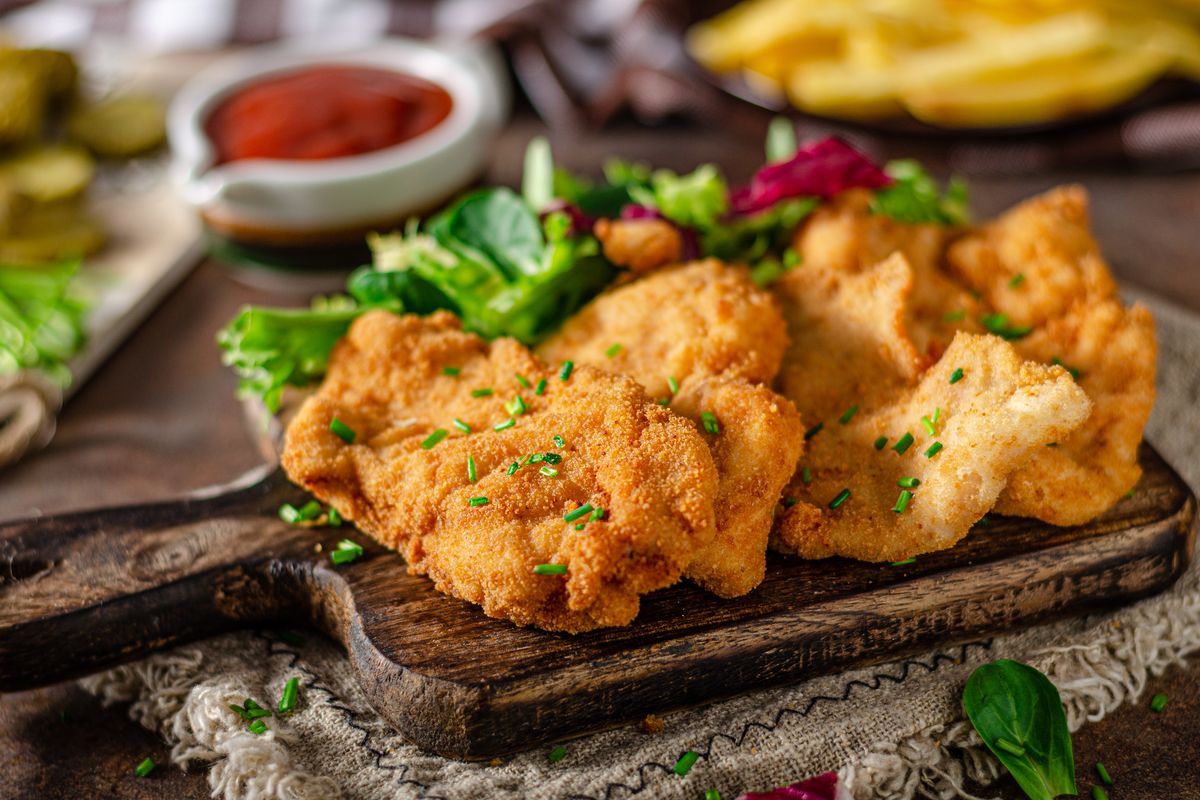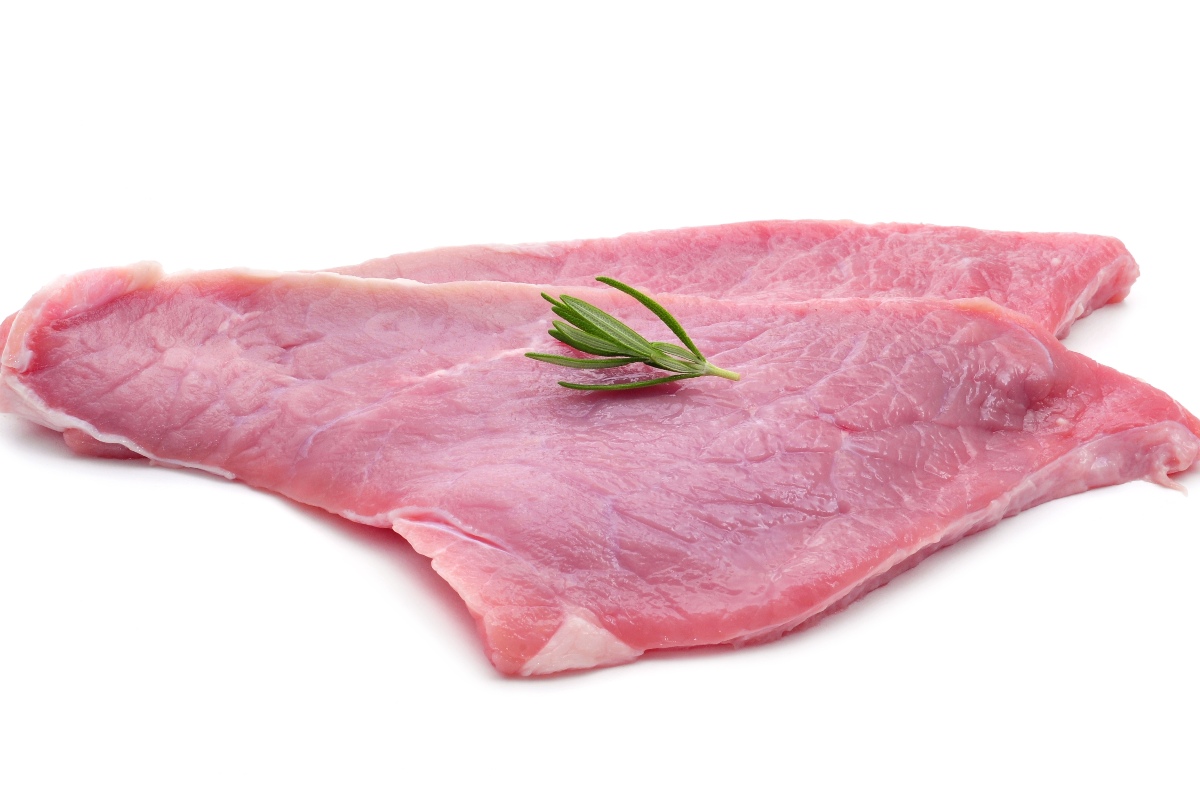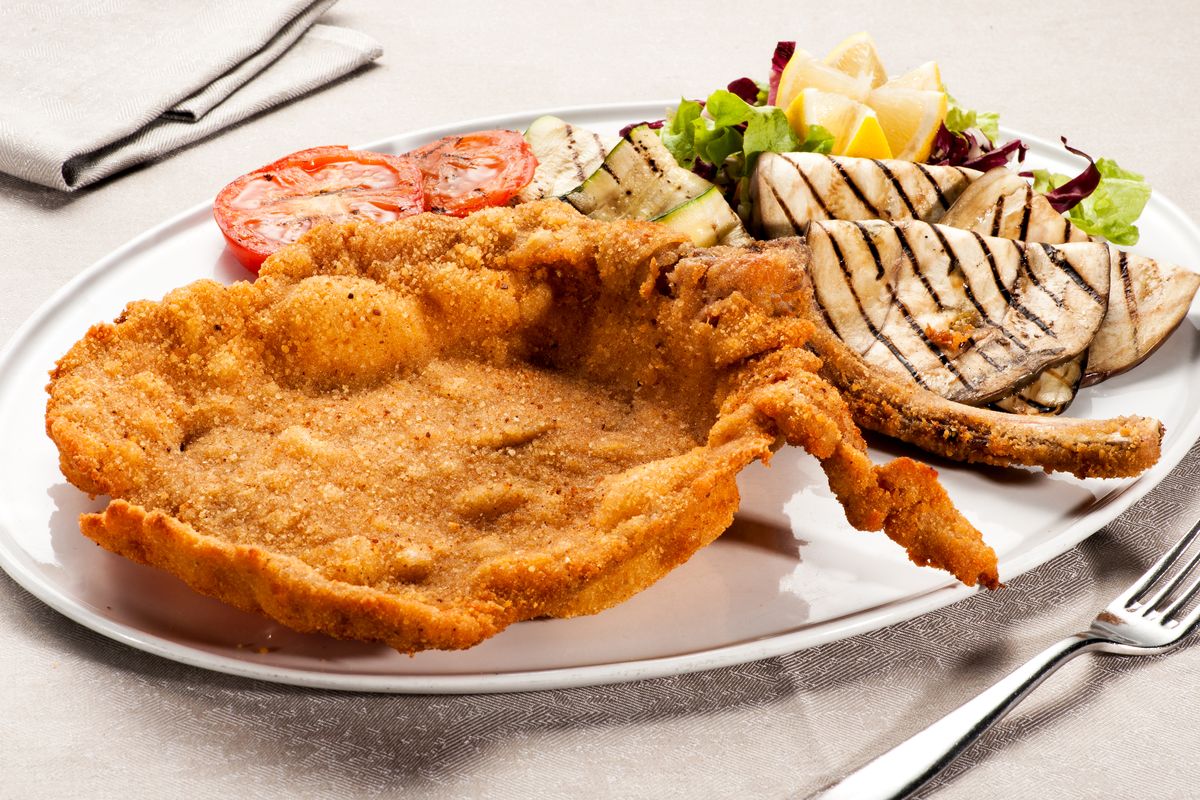Recipes
Wiener schnitzel


Ingredients and recipe for preparing wiener schnitzel, a specialty of Viennese cuisine, also widespread in Germany and Alto Adige!
It is usually thought that wiener schnitzel and cutlet are the same thing, but below we propose the recipe to prepare one of the symbolic dishes of Austrian cuisine and which you can also find in some areas of Alto Adige (the paternity is in fact much disputed between Italy and its Austrian neighbors).
The exact translation of the name of the recipe is Viennese schnitzel, but compared to the schnitzel we know, this dish is prepared with very thin slices of veal , or even pork, and is accompanied with potato salad and cranberry preserves. Now we'll reveal how to prepare this dish that will drive both adults and children crazy.

Ingredients
For the Viennese schnitzel
- Veal rump – 500 g
- Eggs – 2
- 00 flour – to taste
- Grated bread – to taste
For frying
- Clarified butter – 400 g
To serve
- Lemon – 1
- Fine salt – to taste
- Cranberry jam (optional) – to taste
Preparation
How to prepare Wiener Schnitzel with the original recipe
Take the meat and cut it into 3cm slices then beat it with the meat mallet until it reaches a thickness of 5mm .
Prepare the ingredients for the breading: a plate with the flour , one with the beaten eggs and one with the grated bread . Now take the veal slices, flour them, then dip them in the eggs and then in the breadcrumbs.
Place the clarified butter in a large pan, place on the heat and let it heat well. When the butter is melted and nice and hot (160°C), add the breaded cutlets a few at a time and brown on both sides for about 7-10 minutes in total or until they are nice and golden.
Once cooked, pass them on kitchen paper before plating to remove excess grease. Serve the cutlets with a slice of lemon and, if desired, withcranberry jam , just as tradition dictates.
Here is a short video that we made especially for you with all the steps.
Conservation
These Viennese cutlets, being fried, should be eaten as soon as they are ready and still hot. If you can't finish them all you can store them for a maximum of 1 day in the refrigerator, well covered in cling film. If you have used all fresh ingredients you can also freeze them in the freezer immediately after cooking, once they are cold.
Difference between Viennese and Milanese schnitzel
The Milanese cutlet and the Viennese cutlet differ in the cut of meat used: rack of veal with bone in the first, veal rump in the second. Another difference lies in the type of breading : double and only with eggs and bread in the Milanese dish, with a first pass in flour in the French version.
Furthermore, although the wiener was originally fried in lard , today it is customary to use, as in the Milanese version, clarified butter or, at most, butter. Better not to use oil because it would change the final flavor of the dish.
Origin and history
Austria and Italy have always disputed the paternity of the dish but a look at the official documents is enough to clarify any doubts. The hypothesis that the Viennese schnitzel arrived in Austria at the hands of General Radetzky on his return from Italy has no historical basis. As often happens, however, between the two litigants the third wins and, specifically, we are talking about Naples .
The first written trace of the cutlet is contained in Il cuoco galante , a text on Neapolitan cuisine dating back to 1773 and written by Vincenzo Corrado. In turn it seems that the Neapolitans reworked a French recipe, that of cotelettes , covered in breading and cooked in the oven, frying them in lard.
In 1831 the cutlet appeared in Vienna in the German cookbook Allerneuestem allgemeinen Kochbuch by Maria Anna Neudeckers and only in 1855 in the manual Modern Gastronomy by Giuseppe Sorbiatti.
Riproduzione riservata © - WT












